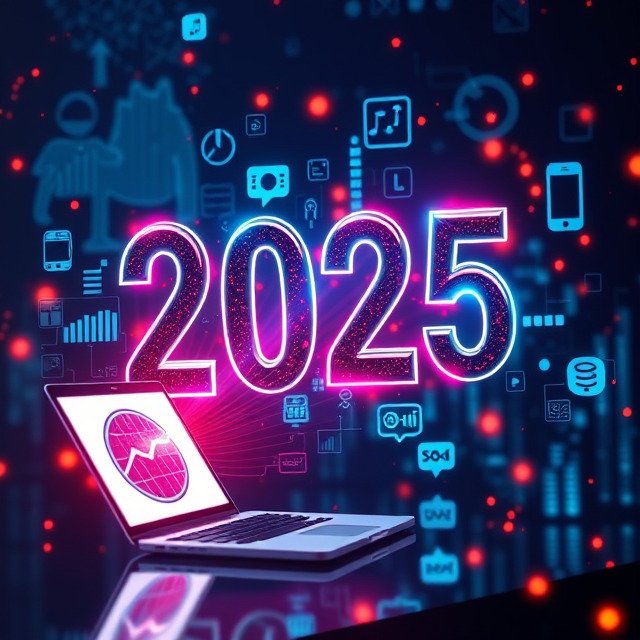
Digital marketing continues to evolve at an unprecedented pace, driven by technological advancements, changing consumer behavior, and the ever-expanding digital landscape. In 2025, businesses must stay ahead of these trends to remain competitive and effectively engage their target audience. This article explores the key digital marketing trends to watch, their potential tradeoffs, and the challenges associated with adopting these strategies.
1. Artificial Intelligence and Automation
AI-powered tools are transforming the digital marketing landscape by enabling hyper-personalization, predictive analytics, and automated customer interactions. AI can analyze vast datasets to uncover consumer insights, optimize ad targeting, and enhance user experiences.
Tradeoffs: While AI offers efficiency and precision, businesses must balance automation with the need for authentic human interaction to maintain brand loyalty. Over-reliance on AI could risk losing the human touch that builds trust with consumers.
Challenges: Implementing AI solutions requires significant investment and technical expertise. Companies also face ethical concerns about data privacy and the potential for algorithmic bias.
2. Voice Search Optimization
With the growing adoption of smart speakers and voice-activated devices, optimizing for voice search is becoming a necessity. Voice queries are typically longer and more conversational, requiring businesses to focus on natural language and long-tail keywords.
Tradeoffs: While voice search optimization can enhance visibility, it demands a shift in traditional SEO strategies and continuous adaptation to evolving algorithms.
Challenges: Accurate content adaptation for voice search requires a deep understanding of user intent and a focus on localized and context-specific searches.
3. Interactive Content
Interactive content, such as quizzes, polls, augmented reality (AR), and 360-degree videos, is gaining traction for its ability to engage audiences and enhance user experience. It encourages active participation, fostering deeper connections with brands.
Tradeoffs: Developing high-quality interactive content can be resource-intensive. Businesses must weigh the costs against the potential for increased engagement and conversions.
Challenges: Ensuring accessibility and compatibility across different devices and platforms is critical for maximizing reach and impact.
4. Sustainability and Ethical Marketing
Consumers increasingly prefer brands that prioritize sustainability and ethical practices. Marketing campaigns that highlight eco-friendly initiatives and social responsibility resonate with modern audiences.
Tradeoffs: While aligning with ethical values can strengthen brand loyalty, it requires transparency and genuine commitment. Greenwashing or insincere claims can backfire, damaging a brand’s reputation.
Challenges: Integrating sustainability into business operations and communicating these efforts effectively requires a holistic approach and collaboration across departments.
5. Influencer Marketing Evolution
Influencer marketing is shifting towards authenticity and niche audiences. Micro and nano-influencers, with smaller but highly engaged followers, are becoming preferred partners for brands.
Tradeoffs: Working with smaller influencers can be more cost-effective but may limit reach. Brands must strike a balance between authenticity and broad exposure.
Challenges: Identifying genuine influencers and measuring ROI remain key challenges. Brands must also ensure compliance with evolving regulations on sponsored content.
6. Data Privacy and First-Party Data
With increasing scrutiny on data privacy, businesses are moving towards leveraging first-party data—information collected directly from consumers. This shift reduces reliance on third-party cookies and enhances control over data.
Tradeoffs: While first-party data collection fosters trust, it requires robust infrastructure to manage and analyze the data effectively.
Challenges: Building trust with consumers and encouraging them to share their data involves transparent communication and value-driven exchanges.
7. The Rise of Immersive Technologies
Virtual reality (VR), augmented reality (AR), and the metaverse are opening new frontiers for immersive brand experiences. From virtual try-ons to branded virtual worlds, these technologies offer innovative ways to engage audiences.
Tradeoffs: Investing in immersive technologies demands substantial resources and technical expertise. Early adopters must also contend with a limited user base as these technologies are still maturing.
Challenges: Creating compelling, high-quality content that delivers value without overwhelming users is a significant challenge for marketers.
8. Omnichannel Marketing
An integrated omnichannel approach ensures a seamless customer experience across all touchpoints, from social media and email to in-store interactions.
Tradeoffs: While omnichannel marketing can improve customer retention, it requires careful coordination and consistent messaging across multiple platforms.
Challenges: Managing and integrating data from diverse channels is complex. Businesses must also stay agile to adapt to new platforms and changing consumer preferences.
Conclusion
The future of digital marketing in 2025 is shaped by innovation, personalization, and a commitment to ethical practices. Businesses must navigate the tradeoffs and challenges of adopting new strategies while staying attuned to consumer needs and market trends. By embracing these trends thoughtfully, brands can position themselves for sustained success in an increasingly competitive digital landscape.